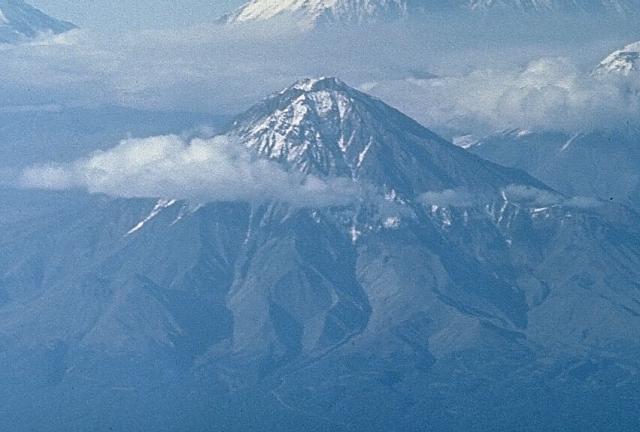A slumbering titan in Russia’s Far East could soon awaken.
Scientists warn that a long-dormant volcano is showing new signs of activity, and an eruption could spell disaster in Russia and beyond.

The Bolshaya Udina volcano was believed to be extinct until 2017, when increasing seismic activity was detected beneath it has come back to life. Now, based on recent research, Ivan Koulakov, a geophysicist from Russia’s A.A. Trofimuk Institute of Petroleum Geology and Geophysics believes it should be reclassified as active, prompting concern about a potentially cataclysmic natural disaster.
“When a volcano is silent for a long time, its first explosion can be catastrophic,” said Ivan Kulakov, the head of the seismic tomography lab at the Russian Institute of Petroleum Geology and Geophysics, in an article for the Russian Academy of Sciences’ Siberian branch. “A large amount of ash is thrown into the air, it is carried far away, and not only the surrounding settlements, but also large territories all over the planet, can suffer.”
Between 1999 and September 2017, about 100 weak seismic events were detected beneath the volcano, which stands at 9,590 feet above sea level. An “anomalous increase” in seismicity, however, began in October 2017. Between October 2017 and February 2019, about 2,400 seismic events were recorded.
February saw an earthquake of 4.3 magnitude occur under Udina – the strongest seismic event ever to occur in the area.
In 2017, the Kambalny volcano, located in the Yuzhno-Kamchatsky wildlife preserve in Kamchatka erupted for the first time in around 250 years:
New Research
Researchers from Russia, Egypt and Saudi Arabia conducted a study of the volcano last year between May and July, now published in the Journal of Volcanology and Geothermal Research.
Installing four temporary seismic monitoring stations around Bolshaya Udina, the researchers recorded and analyzed 559 seismic events.
An “elliptical cluster” of seismic activity had formed around the volcano with seismic events taking place more than three miles beneath the surface.
“These seismic properties may indicate the presence of magma intrusions with a high content of […] fluids, which may justify changing the current status of this volcano from ‘extinct’ to ‘active,‘”the scientists wrote.
Moreover, they observed that the cluster of seismic events connected the volcano with the Tolud zone, to the south of the volcano, a region believed to store magma in the Earth’s lower crust. The Tolud zone was now feeding Bolshaya Udina with magma, they concluded, thanks to a new pathway that developed in 2018.
Recall Pompeii
“Recall Pompeii,” the researcher added ominously: the ancient Roman settlement was wiped off the map by the eruption of Mount Vesuvius, which laid dormant for thousands of years prior. The city was buried in over 10 feet of ash and most of its inhabitants are thought to have been killed in the disaster.
Kulakov headed up a study in 2017 to measure what he called “seismic unrest” around Bolshaya Udina; his team’s findings led to a reclassification of the volcano from “extinct” to “active” the same year.
While the researchers warned of the volcano’s huge destructive potential, it may be too early to begin preparing for the apocalypse. It is impossible to predict whether an eruption would occur, Kulakov said, but added “undoubtedly, now we need to closely monitor Udina.”
Bolshaya Udina makes up half of the Udina volcanic massif, which also includes Malaya Udina (“big” and “small” Udina, respectively). It stands at just over 9,500 feet on Russia’s Kamchatka Peninsula. According to the geologists, the volcano shares structural characteristics with another formerly extinct volcano in the region, the Bezymianny, which erupted dramatically in 1956.
Unfortunately, the volcano is difficult to monitor, thanks to its distance from permanent seismic stations. In any cases, if you are in the region prepare yourself and your family for a cataclysmic eruption…












Nibiru is Coming.